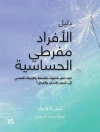A beautifully drawn comic book inspired by Japanese manga and Indigenous art and legend
This powerful story about a brave hummingbird shares a message of environmental stewardship
Hummingbirds have long been a symbol of wisdom and courage. In this breathtaking book, a hummingbird makes a valiant effort to put out a raging fire that threatens her forest home. She makes many trips over the burning woodland because her tiny beak can only hold one drop of water at a time. Her efforts show the other creatures in the forest that doing something—anything—is better than doing nothing at all. Will they join her in her fight to save their home?
The hummingbird parable, which originates with the Quechuan people of South America, has become a talisman for environmentalists and activists worldwide committed to making meaningful change. This retelling, enlivened by Michael Nicoll Yahgulanaas’ fabulous Haida-Manga illustrations, is suitable for all ages of would-be activists. Although environmental responsibility often seems like an overwhelming task, The Flight of the Hummingbird shows how easy it is to start and how great the effect could be if everyone just did what they could.
Inhoudsopgave
The Hummingbird by Wangari Maathai
The Story of the Hummingbird
Afterword: The Environment and Personal Responsibility by His Holiness the Dalai Lama
About Wangari Maathai
About His Holiness the Dalai Lama
Artist’s Statement by Michael Nicoll Yahgulanaas
The Origins of the Hummingbird Story
Over de auteur
Michael Nicoll Yahgulanaas has worked on finding progressive solutions to contemporary social and environmental issues in the pacific archipelago of Haida Gwaii. Recalling that substantive changes depended on the deeds and voices of people from small villages he echos the Hummingbird’s message by saying “Only the unlikely become heroes”. His artwork is published and exhibited in Asia and North America and a full length Haida Manga book will be released in 2009. He lives in Vancouver, British Columbia.
Wangari Muta Maathai was born in Nyeri, Kenya, in 1940, the daughter of farmers in the highlands of Mount Kenya. She is the founder of the Green Belt Movement, which, through networks of rural women, has planted over thirty million trees across Kenya since 1977. In 1986 the Movement established a Pan African Green Belt Network, which has taught people from other African countries the Green Belt Movement’s approach to environmental conservation and community building. Several African countries have since started similar successful initiatives. She lives in Nairobi, Kenya.
His Holiness the 14th Dalai Lama,
Tenzin Gyatso, is the head of state and the spiritual leader of the Tibetan people. He was born on July 6, 1935, to a farming family in a small hamlet in Taktser, northeastern Tibet. At the age of two, in accordance with Tibetan tradition, he was recognized as the reincarnation of his predecessor the 13th Dalai Lama. In 1989 he was awarded the Nobel Peace Prize for his non-violent struggle for the liberation of Tibet. He has consistently advocated policies of non-violence, and he also became the first Nobel Laureate to be recognized for his concern for global environmental problems. He lives in Dharamsala, India.












